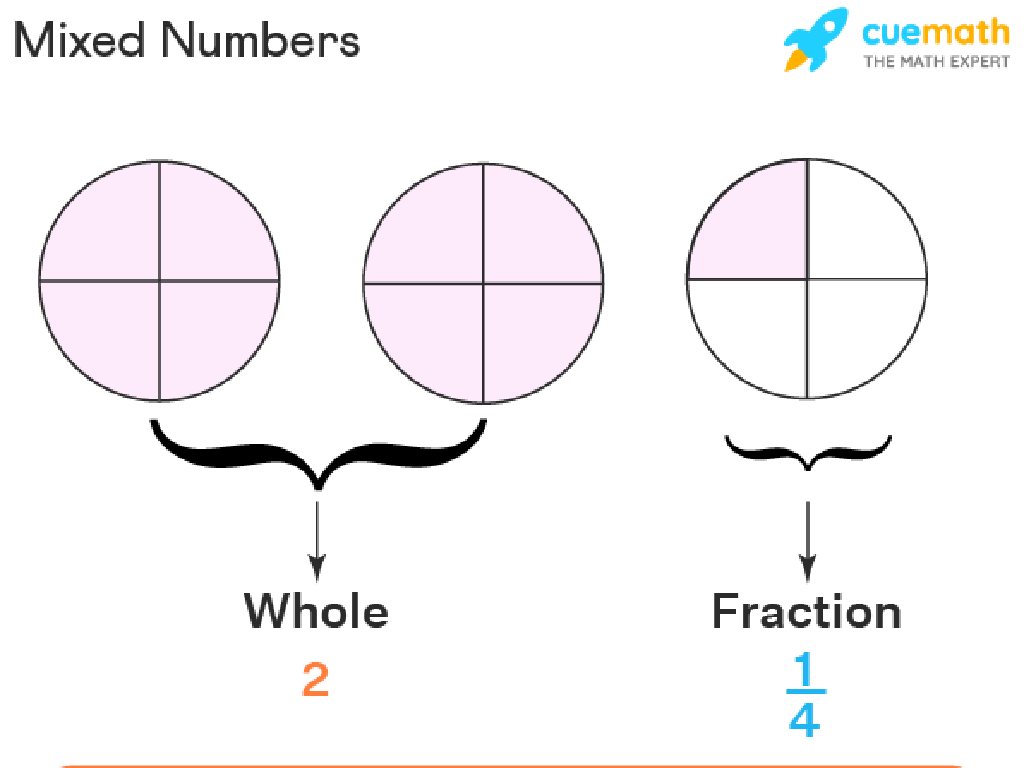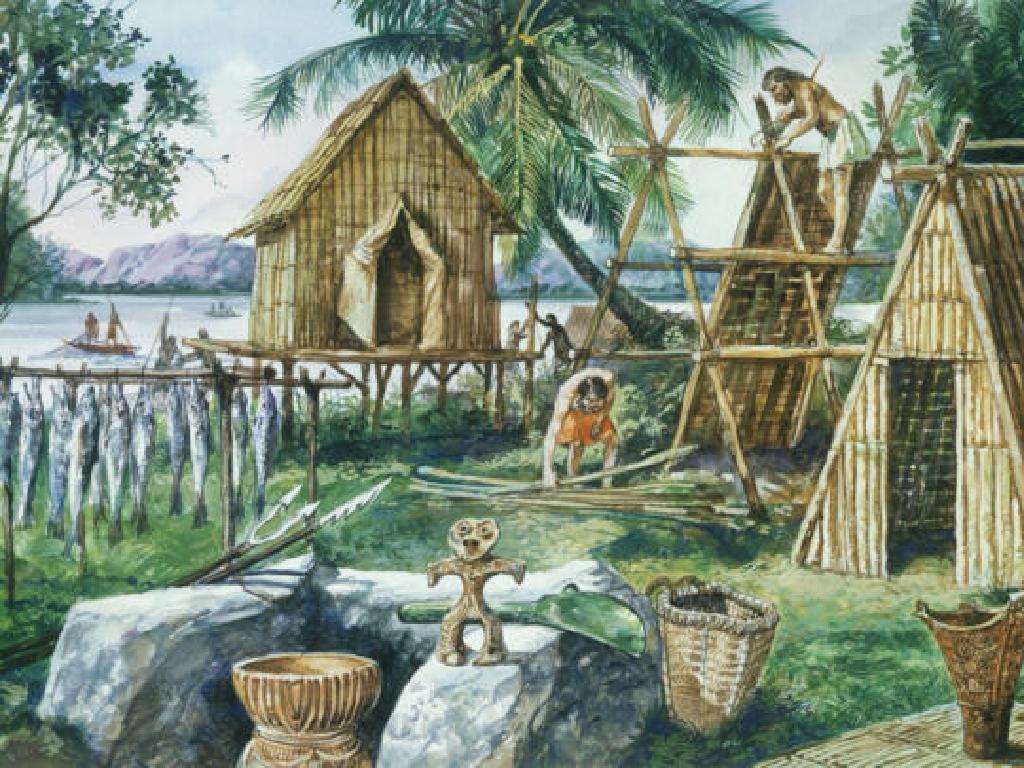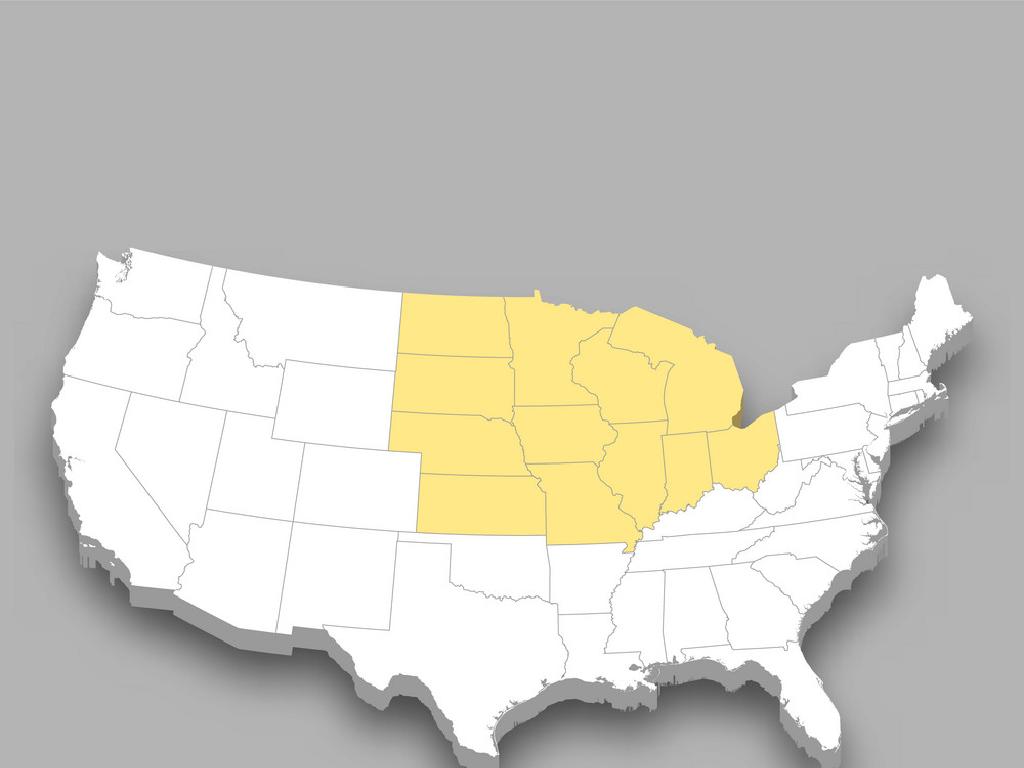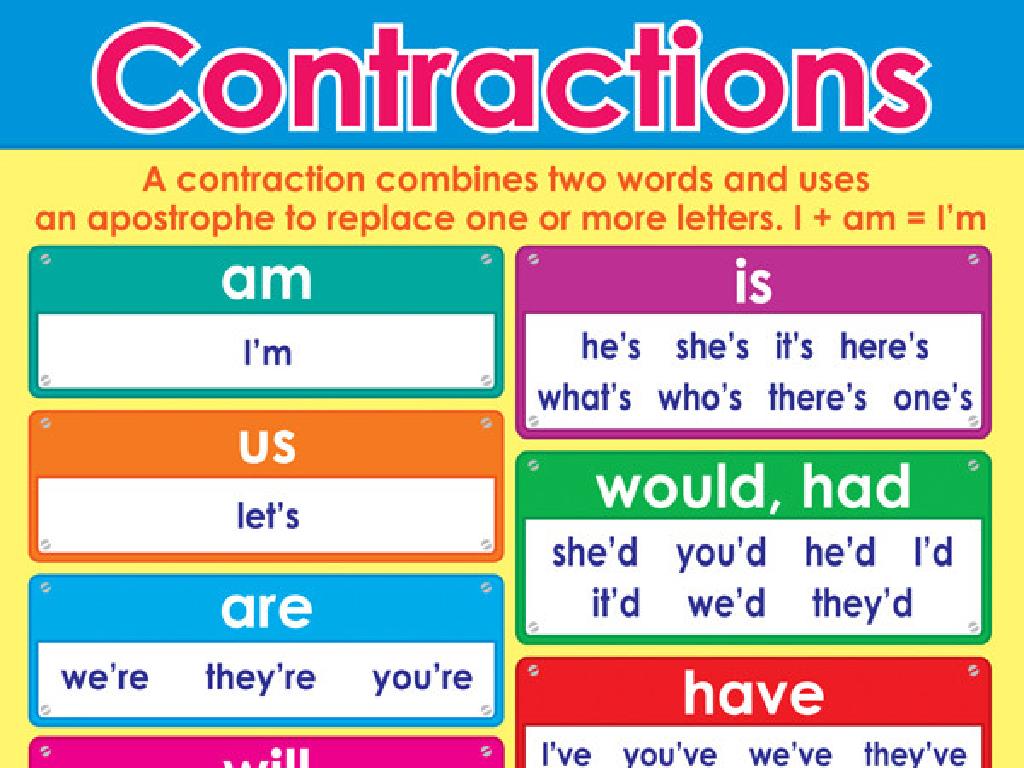Make Halves And Fourths In Different Ways
Subject: Math
Grade: First grade
Topic: Fractions
Please LOG IN to download the presentation. Access is available to registered users only.
View More Content
Welcome to Fractions: Halves and Fourths
– Learn about halves and fourths
– Splitting things into 2 equal parts makes halves
– Parts of a whole explained
– A whole is like a pizza, it can be divided
– Using food to understand fractions
– Cut an apple into 4 equal pieces, each is a fourth
– Shapes help us see fractions
– A square can be divided into 4 smaller squares
|
This slide introduces first graders to the concept of fractions, specifically halves and fourths. Begin by explaining that a fraction represents a part of a whole. Use relatable examples like cutting a pizza or an apple to illustrate the idea of halves and fourths. Show them visually with shapes like circles and squares divided into equal parts. Encourage the students to think of other examples of halves and fourths in their daily lives. The goal is to help them visualize and understand that fractions are simply parts of a whole item or group.
Understanding Halves
– Cutting into 2 equal parts
– Each part is a half
– One half is one out of two equal parts of an item
– Halves make a whole
– Examples of halves
– Example: A sandwich cut into 2 equal pieces
|
This slide introduces the concept of halves to first-grade students. Begin by explaining that when an object is cut into two equal parts, each part is called a half. Emphasize the importance of the parts being equal, as this is what makes them halves. Show visual examples of common items cut into halves, such as a sandwich, an apple, or a piece of paper. Use real objects or images to help students visualize and understand the concept. Encourage students to think of other items that can be divided into halves and discuss why each part must be equal. This foundational understanding of halves will be crucial as they progress in learning about fractions.
Finding Halves
– Making halves by cutting or dividing
– Imagine cutting an apple into two equal parts
– Halves are equal in size
– Like two equal slices of pizza
– Fold paper to make halves
– We’ll fold paper in class to see this
– Both halves match perfectly
– When folded, one side is just like the other
|
This slide introduces the concept of halves to first graders. Begin by explaining that when we make halves, we are making two pieces that are the same size. Use tangible examples like cutting an apple or a pizza where each piece is equal. During the class activity, guide students to fold paper in half, ensuring each side lines up with the other, to visually demonstrate the concept of equal halves. Emphasize that each half is just as big as the other, showing the idea of equality in fractions. Encourage students to try making halves with different objects to reinforce the concept.
Understanding Fourths in Fractions
– Fourths: cutting into 4 equal parts
– Each part is 1 of the 4 equal parts
– Visual examples of fourths
– Like a pizza cut into 4 slices, each slice is a fourth
– Practice making fourths together
– Use paper folding or drawing to create fourths
|
This slide introduces the concept of fourths to first graders. Begin by explaining that when an object is cut into four equal parts, each part is called a fourth. Emphasize the idea of ‘equal parts’ to ensure students understand that all four parts must be the same size. Show visual examples, such as a pizza or a pie cut into four pieces, to help them visualize the concept. Engage the students in a hands-on activity where they can fold paper into four equal parts or draw shapes divided into fourths. This practical exercise will reinforce their understanding of the concept of fourths in fractions.
Making Fourths with Shapes
– Divide things twice to make fourths
– Like cutting a sandwich diagonally, twice!
– Ensure all four parts are equal
– Each piece should be the same as the others
– Activity: Cutting playdough into fourths
– Use playdough to practice making equal parts
|
This slide introduces the concept of creating fourths, which is a fundamental skill in understanding fractions. Emphasize that to make fourths, an item must be divided twice, and it’s crucial that all resulting parts are of equal size to ensure fairness and accuracy. The activity involves using playdough, which is a tactile and engaging way for students to practice this concept. Provide different shaped playdough cutouts and safe cutting tools. Guide the students through the process of cutting the shapes into equal fourths. Possible variations of the activity could include using paper to fold and cut into fourths, drawing shapes and dividing them into fourths, or using items like crackers or fruits to physically divide and create fourths.
Halves and Fourths Together
– Compare halves and fourths
– Two fourths equal one half
– Like sharing a pizza: 2 slices (1/4 each) make half the pizza (1/2)
– Counting fourths in a whole
– If a pizza is cut into 4 slices, all 4 slices make the whole pizza
– Visualizing fractions
– Use drawings or objects to show parts of a whole
|
This slide aims to help students visualize and understand the relationship between halves and fourths. Start by comparing the sizes of halves and fourths using objects like fruit or paper cutouts. Explain that two fourths are the same as one half by demonstrating with an object cut into fourths, showing that combining two of these parts creates a half. Then, help students count how many fourths make up a whole by putting all four parts back together. Use visual aids like pie charts or fraction bars to reinforce these concepts. Encourage students to draw their own examples and to physically manipulate objects to better grasp the idea of combining fractions to make a whole or a half.
Class Activity: Fraction Fun with Pizzas!
– Create paper pizza crafts
– Cut pizzas into halves and fourths
– Halves: two equal parts, Fourths: four equal parts
– Share and explain your pizza fractions
– Show your pizza, tell us about the slices
– Understand halves and fourths
– Grasping the concept of dividing whole items
|
This activity is designed to help first graders understand the concept of fractions in a fun and interactive way. Provide each student with a circle of paper to represent a pizza. Assist them in folding and cutting the paper to create halves and fourths, explaining that each fold represents an equal part of the whole. Encourage creativity as they decorate their pizzas with crayons to add toppings. Once completed, each student will share their pizza with the class, explaining how many slices they have and what fraction each slice represents. This hands-on experience reinforces the idea that fractions are parts of a whole and provides a visual and tactile way to grasp the concept of halves and fourths. Possible variations of the activity could include using real fruit to slice, folding paper plates, or even using playdough to mold and cut ‘pizzas’.






